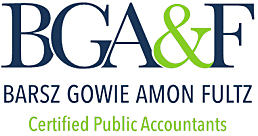Enhancing accessibility in business environments for both customers and employees may offer potential growth opportunities, allowing businesses to tap into a larger customer base and foster a more diverse workforce.
From a legal standpoint, some businesses may be required to provide reasonable accommodations under the Americans with Disabilities Act (ADA). The ADA requires businesses with 15 or more employees to make reasonable accommodations for individuals with disabilities. These accommodations may include making physical changes to the workplace. Failing to meet these standards can lead to substantial penalties.
Enhancing accessibility, however, can be costly, presenting a significant challenge, especially for smaller businesses. Fortunately, there are federal tax benefits specifically designed to alleviate these expenses.
Whether your business is legally required to make these changes or you’re considering them as part of a strategic initiative to expand your customer base and workforce, these tax benefits can help offset the associated costs.
Enhancing Accessibility: Federal tax benefits for property improvements
Disabled Access Credit
Small businesses that make their facilities accessible to people with disabilities may qualify for the Disabled Access Credit. To be eligible, a small business must have had $1 million or less in gross receipts or had no more than 30 full-time employees in the previous year. The non-refundable credit amounts to 50% of eligible access expenditures, up to $10,000 annually.
These expenditures may include costs associated with the following:
- Installing ramps, elevators, or other accessibility equipment.
- Providing qualified interpreters or other methods to enhance accessibility for hearing-impaired individuals.
- Providing qualified readers or other methods of making visual materials available to individuals with visual impairments.
- Acquiring or modifying equipment or devices for individuals with disabilities.
To claim the Disabled Access Credit, businesses must file Form 8826 with the IRS.
Architectural and Transportation Barrier Removal Deduction
Businesses of any size can benefit from the Architectural and Transportation Barrier Removal Deduction. This tax deduction encourages companies to remove barriers that improve accessibility for people with disabilities and the elderly. Eligible businesses can claim a deduction of up to $15,000 per year for qualified expenses, such as widening doorways or installing wheelchair ramps. To claim this deduction, businesses must list it as a separate expense on their income tax return.
If you decide to make renovations to enhance the accessibility of your business, it’s possible to use both the Disabled Access Credit and the Architectural Barrier Removal Deduction in the same tax year. To use both, the deduction should equal the difference between the total expenditures and the amount of the credit claimed.
Let’s say you install ramps, elevators, and widen doorways for $20,000. If your business meets the criteria for the Disabled Access Credit, you can claim a credit of $10,000 (50% of $20,000). You can also claim the Architectural and Transportation Barrier Removal Deduction. Since you have already claimed $10,000 of the $20,000 cost for the credit, you have $10,000 in eligible expenses remaining that can be claimed as a deduction.
Enhancing Accessibility: Federal tax benefits for workforce inclusion
Work Opportunity Tax Credit
The Work Opportunity Tax Credit (WOTC) is available to employers who hire individuals facing significant barriers to employment, including people with disabilities and veterans.
The maximum amount of tax credit for qualified employees who worked 400 or more hours of service is:
- $2,400 or 40% of up to $6,000 of first-year wages for each qualifying individual.
- $9,600 or 40% of up to $24,000 of first-year wages for certain qualified veterans.
- A 25% rate applies to wages for individuals who work at least 120 hours but less than 400 hours for the employer.
An employer may claim the WOTC for an individual who is certified as a member of any of the following targeted groups:
- Individuals formerly incarcerated or those previously convicted of a felony.
- Recipients of state assistance under part A of Title IV of the Social Security Act (SSA).
- Veterans
- Residents in areas designated as empowerment zones or rural renewal counties.
- Individuals referred to an employer following completion of a rehabilitation plan or program.
- Individuals whose families are recipients of supplemental nutrition assistance under the Food and Nutrition Act of 2008.
- Recipients of supplemental security income benefits under Title XVI of the SSA.
- Individuals whose families are recipients of state assistance under part A of Title IV of the SSA.
- Individuals experiencing long-term unemployment.
It’s important to note that these credits only apply to employees unrelated to the employer or majority stakeholder in the business. Furthermore, the credit isn’t available for employees who have previously worked for the employer. Each of these tax benefits is designed to incentivize the hiring of new employees who face employment barriers.
To receive the credit, the employer must obtain a certification from the local state workforce agency verifying that the new hire is qualified as a member of a targeted group. There is a time-sensitive process for documentation requirements in the hiring process, so please contact our office if you plan to leverage the tax credit.
Proper documentation
It is important to keep meticulous records of all expenses related to accessibility enhancements to claim these credits and deductions. Documentation may include invoices, receipts, and proof of payment. Also, document the work completed, perhaps with before-and-after photos, particularly for substantial physical modifications.
Improving accessibility in businesses not only ensures inclusivity for customers and employees with disabilities but also expands the potential customer base and workforce diversity. Making these changes doesn’t have to be financially daunting, as federal tax benefits can help offset these costs. If you have any questions or want to discuss how your business may benefit from these tax credits and deductions, please contact our office to speak with one of our expert advisors.




